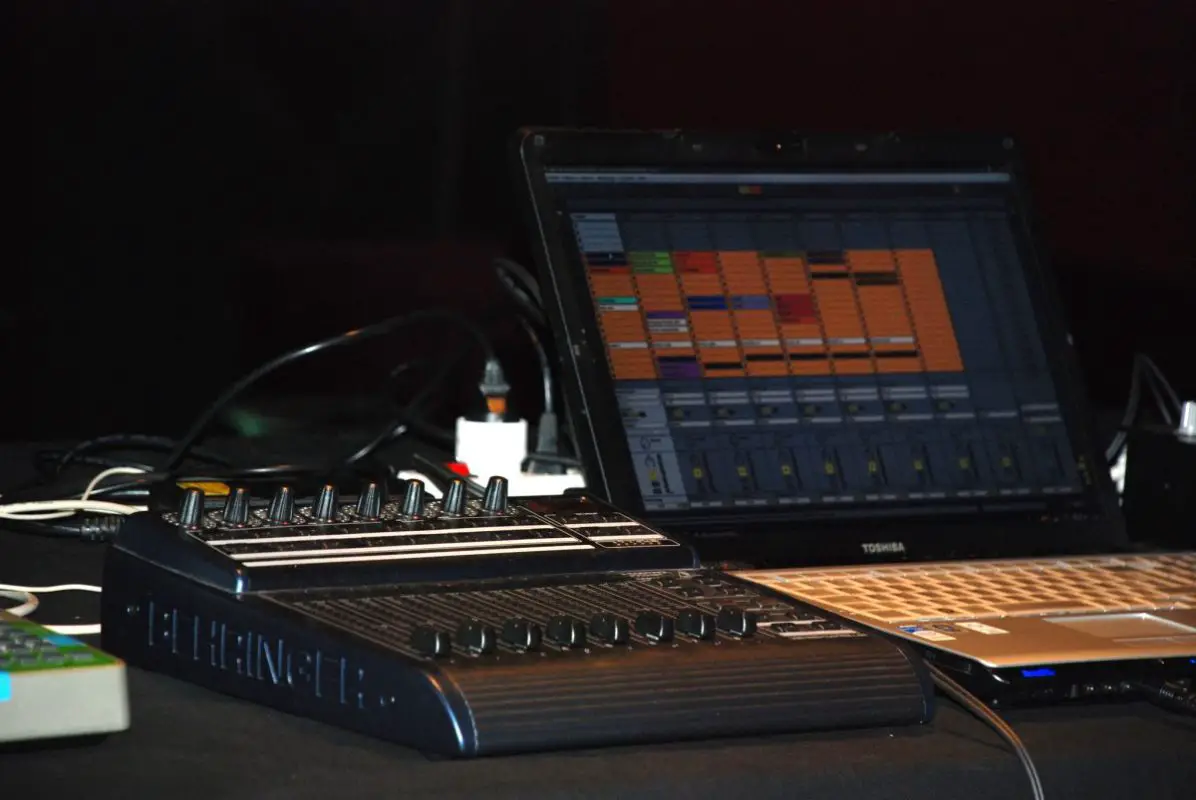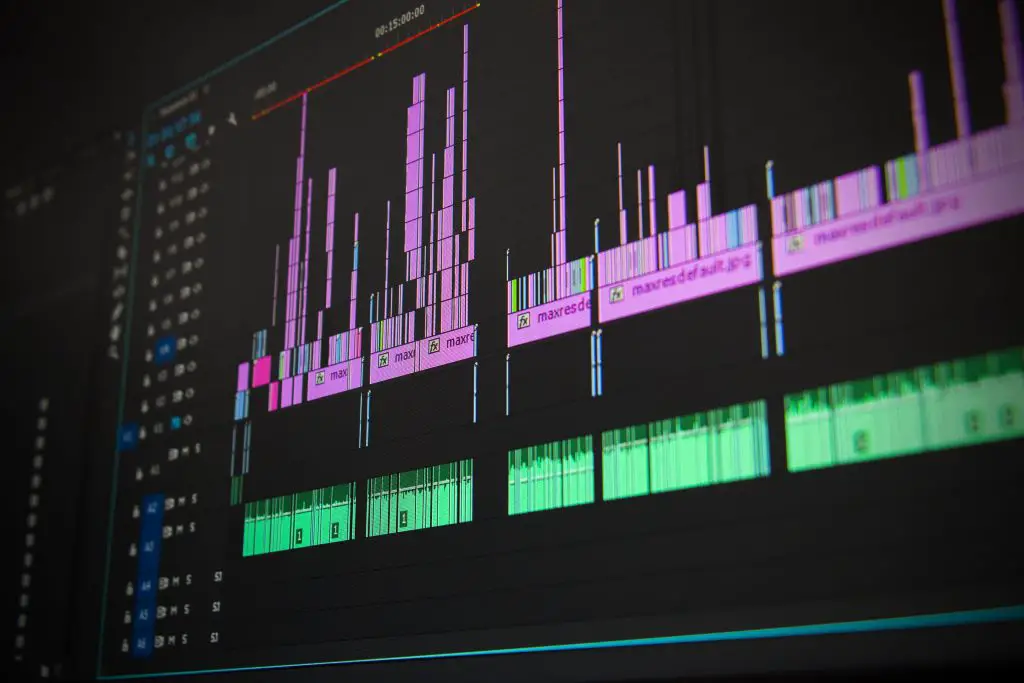Routing is the mystical art of guiding audio signals through a web of connections, ensuring they find their way to the right destinations in the audio realm. Think of it as a sonic GPS, mapping out the path for your precious sounds to journey from inputs to outputs, from microphones to speakers, and everything in between. In this post, you’ll learn the art of routing and shaping soundscapes that will make the muses themselves tip their hats in admiration. So, are you ready to embark on this journey?
What is routing? Routing in audio production refers to the process of directing audio signals from one location to another within a digital audio workstation (DAW), allowing for efficient organization, signal processing, and creative control over the music production process.
What is audio routing?
In the vibrant world of music production, audio routing takes center stage as the conductor guiding the symphony of sounds. So, what exactly does audio routing entail? Well, it’s the art of smoothly moving audio signals from one place to another, ensuring they reach their desired destinations with finesse.

Think of it as the backstage magic that seamlessly connects instruments, vocals, and effects, creating the melodic tapestry we all love. When it comes to audio routing, efficiency is the name of the game. It’s all about managing and organizing audio signals in a way that enhances the creative process.
By skillfully directing these signals, producers can control the flow and processing of each element, giving birth to captivating compositions. Imagine being able to tweak the guitar riff in one section while leaving the vocal track untouched—audio routing makes this kind of precision possible.
AKAI Professional MPK Mini MK3

AKAI Professional MPK Mini MK3
What are the audio routing techniques used in a DAW?
There are two main audio routing techniques that you can use with your digital audio workstation (DAW). Let’s explore them below:
Inserts
Picture inserts as the secret passages in your favorite video game—they are the hidden doors that lead to exciting audio adventures. Inserts in audio routing refer to the points in a DAW where you can inject audio effects or processors into a specific track. Here’s a breakdown of how inserts work:
- You choose an effect or processor from your virtual toolbox.
- You “insert” it into a track, like placing a magical spell on a character.
- The audio signal passes through the effect or processor, transforming it in real time.
- Voila! You’ve added a unique flavor to the sound.
Using inserts for audio routing allows you to sculpt and shape individual tracks, applying effects and processing tailored to your creative vision. From EQs and compressors to reverb and delay, the possibilities are endless.
By utilizing subgroups in your audio routing workflow, you gain enhanced control and efficiency.
Subgroups
Subgroups are like the Avengers of audio routing—they bring together a team of tracks united in sound and purpose. Subgroups allow you to group multiple tracks together, creating a single entity that can be processed collectively. Here’s how it works:
- Select a set of tracks that you want to group, like assembling your dream superhero squad.
- Assign them to a subgroup, which acts as a virtual commander, overseeing the group’s sonic destiny.
- Apply effects or processing to the subgroup.
- The audio signals from the grouped tracks pass through the subgroup, where they are collectively modified.
By utilizing subgroups in your audio routing workflow, you gain enhanced control and efficiency. You can easily adjust the overall levels, apply common effects, or manipulate the group as a cohesive unit. It’s like having a superpower that amplifies your creative impact.
There are other techniques that you can use when audio routing. Here’s a fascinating data table with a comparison of their usage:
| Routing Technique | Description | Example Usage |
|---|---|---|
| Inserts | Audio effects or processors inserted directly into a specific track | Applying EQ and compression to a vocal track |
| Subgroups | Grouping multiple tracks together for collective processing | Controlling the levels and applying effects to a drum kit |
| Auxiliary Channels | Sending audio signals to auxiliary tracks for additional processing | Adding reverb or delay to create spatial effects |
| External Routing | Utilizing external hardware for specialized routing | Routing through analog compressors for vintage warmth |
What are the best practices of audio routing?
Audio routing is an essential technique in music production that involves directing audio signals from one location to another within a digital audio workstation (DAW). This allows for efficient organization, signal processing, and creative control over the music production process, shaping the soundscapes in a way that enhances the creative process.
Here are the best practices for audio routing in music:
1. Understand the signal flow
In a digital audio workstation, understanding the signal flow is vital for efficient music production. It’s critical to know where your signals are going and when they hit different software and hardware elements of your setup. Misunderstanding or losing track of this flow can lead to errors or ineffective routing configurations.
2. Utilize inserts
Inserts in audio routing are points in a DAW where you can inject audio effects or processors into a specific track. The effect or processor is chosen from a virtual toolbox and “inserted” into a track. The audio signal then passes through the processor or effect, allowing precise control over the sound on that track. The order of the inserts determines how the sound is processed, so the sequence of these inserts is important.

3. Proper use of audio buses
Depending on your mix situation, you may want to send certain tracks to an audio bus to be processed before hitting the master bus. This is a common practice when you decide to do bus processing. The audio bus is essentially a path through which audio signals are sent from one place to another, allowing for the collective processing of multiple tracks at once.
4. Remember the order of signal processing
The order in which you process signals can greatly affect the output sound. For instance, if you’re using plug-ins, the plug-in in the first insert position will feed into the plug-in in the second insert position. If the order is the compressor, then changes to the EQ will not impact the compressor.
5. Monitoring levels and avoiding distortion
When recording, it’s crucial to set your recording level via the mic preamp. Overloading the A/D converter can cause distortion, which can’t be fixed by simply turning down the track fader. This is because the track fader does not affect your recording level.
Here are some dos and don’ts of audio routing techniques:
| Dos | Don’ts |
|---|---|
| Do experiment with different effect chains. | Don’t overcomplicate routing unnecessarily. |
| Do use subgroups for collective processing. | Don’t forget to organize your routing paths. |
| Do explore creative auxiliary channel routing. | Don’t neglect the importance of CPU resources. |
Advantages and disadvantages of audio routing
When it comes to audio routing, like any aspect of music production, there are both advantages and disadvantages to consider. Let’s break them down:
Advantages of audio routing
Efficient audio routing brings several advantages to the table, allowing music producers to harness their creative potential:
- Precise track manipulation: Inserts and subgroups enable detailed control and processing of individual tracks or groups, shaping the desired sonic landscape.
- Flexible effects and processing: With the ability to route through auxiliary channels, producers can experiment with various effects, adding depth and character to their mix.
- Integration of external hardware: External routing expands possibilities by incorporating specialized analog equipment, offering unique tonal characteristics and vintage vibes.
Disadvantages of audio routing
While audio routing provides immense benefits, it’s important to be aware of potential challenges:
- Learning curve: Mastering different routing techniques can require time and effort, especially for beginners. It may take some practice to fully grasp the concepts and implement them effectively.
- Processing power usage: In complex projects with heavy routing and extensive effects, the CPU can become strained. Proper optimization and balancing are crucial to ensure smooth playback and avoid system overload.
By weighing the advantages against the disadvantages, you can make informed decisions and leverage the power of audio routing to enhance your music production process.
If you want even more tips and insights, watch this video called “Audio Routing Explained – What is routing in music?” from the Slick Audio YouTube channel.
Frequently asked questions (FAQ)
Do you still have questions about routing in audio? Below are some of the most commonly asked questions.
How can I optimize CPU usage when using extensive audio routing?
To optimize CPU usage for complex routing setups, it is important to follow these tips. First, make efficient use of effects and processors by applying them only when necessary. Additionally, consider freezing or bouncing tracks that have heavy processing to lessen the real-time CPU load. Lastly, rendering or exporting tracks with complex routing and effects can help free up CPU resources.
Can I change the routing of a specific audio track without affecting others?
Absolutely! Inserts provide a great solution for this. By applying effects or processors through inserts on a specific track, you can alter its routing path while keeping other tracks unaffected.
Is it possible to route audio from one DAW to another?
Yes, it’s possible! Through the use of virtual audio cables or software plugins designed for inter-DAW communication, you can route audio signals from one DAW to another, enabling seamless integration and collaboration.
Conclusion
And that, my friends, wraps up our journey through the captivating world of audio routing in music production. From inserts to subgroups, we’ve explored the key concepts and techniques that bring your sounds to life. Remember, audio routing is the secret sauce that helps you navigate the sonic landscape with finesse—creating captivating compositions and unleashing your creative potential.
And did I cover everything you wanted to know? Let me know in the comments section below—I read and reply to every comment. If you found this article helpful, share it with a friend, and check out my full blog for more tips and tricks on audio production. Thanks for reading, and may your audio routing adventures be filled with creativity and sonic wonders!
Key takeaways
This article covered the fascinating world of audio routing in music production. Here are some key takeaways:
- Audio routing involves efficiently moving audio signals from one location to another within a DAW.
- Digital audio routing in a DAW offers automatic and seamless signal management.
- Techniques like inserts, subgroups, auxiliary channels, and external routing enhance creative control and processing options.
- Proper audio routing can save time, optimize CPU usage, and streamline the music production workflow.















